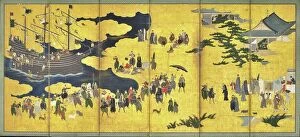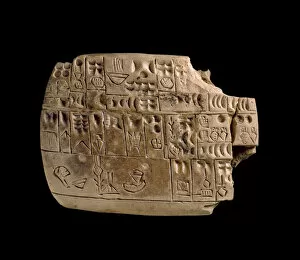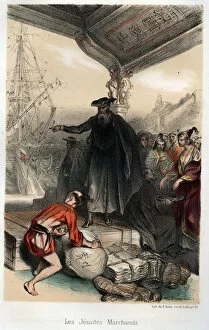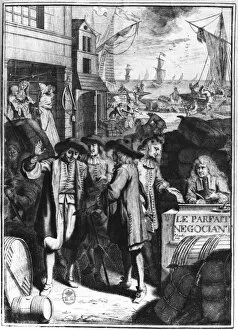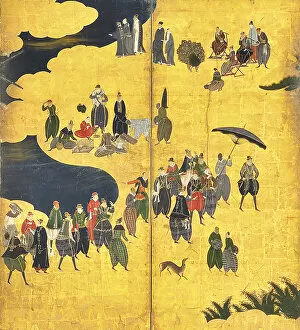Mercantilism Collection
"Mercantilism: Exploring the Trade and Power Dynamics of the Early 17th Century" In this captivating detail from the Southern Barbarians Come to Trade
For sale as Licensed Images
Choose your image, Select your licence and Download the media
"Mercantilism: Exploring the Trade and Power Dynamics of the Early 17th Century" In this captivating detail from the Southern Barbarians Come to Trade, a pair of six-panel screens created in early 17th century Japan, we are transported back in time to witness the fascinating world of mercantilism. These intricate screens, adorned with ink, color, gold leaf on paper, offer us a glimpse into an era where trade was not just about commerce but also about asserting dominance and establishing global connections. The scene depicted here showcases the arrival of Southern Barbarians seeking lucrative trading opportunities. Their ships docked at foreign shores as they embarked on journeys that would shape history. The vibrant colors and meticulous details bring to life their exotic attire and unique customs. As we delve deeper into this historical narrative, we encounter various artifacts that shed light on different aspects of mercantilism. A tablet listing quantities of commodities serves as a testament to the importance placed on tracking resources for economic gain. Meanwhile, an ancient tax record reveals how Genghis Khan imposed levies on salt, sugar, and spices in Quinsay – highlighting how even rulers sought to control trade for their own benefit. The Jesuit Merchants lithograph transports us further along our journey through time. It reminds us that religion played a significant role in shaping trade relationships during this period. Missionaries often acted as intermediaries between cultures while simultaneously pursuing commercial interests. Re-establishment of Navigation Rights painting takes us forward to 1663 when navigation rights were restored after periods of restriction. This event marked a turning point in international trade relations as it allowed merchants greater freedom to explore new markets and expand their influence across borders. Le Parfait Negociant's frontispiece by Jacques Savary offers valuable insights into the mindset prevalent among traders during this era – one focused on acquiring wealth through shrewd negotiation tactics and astute business acumen.

